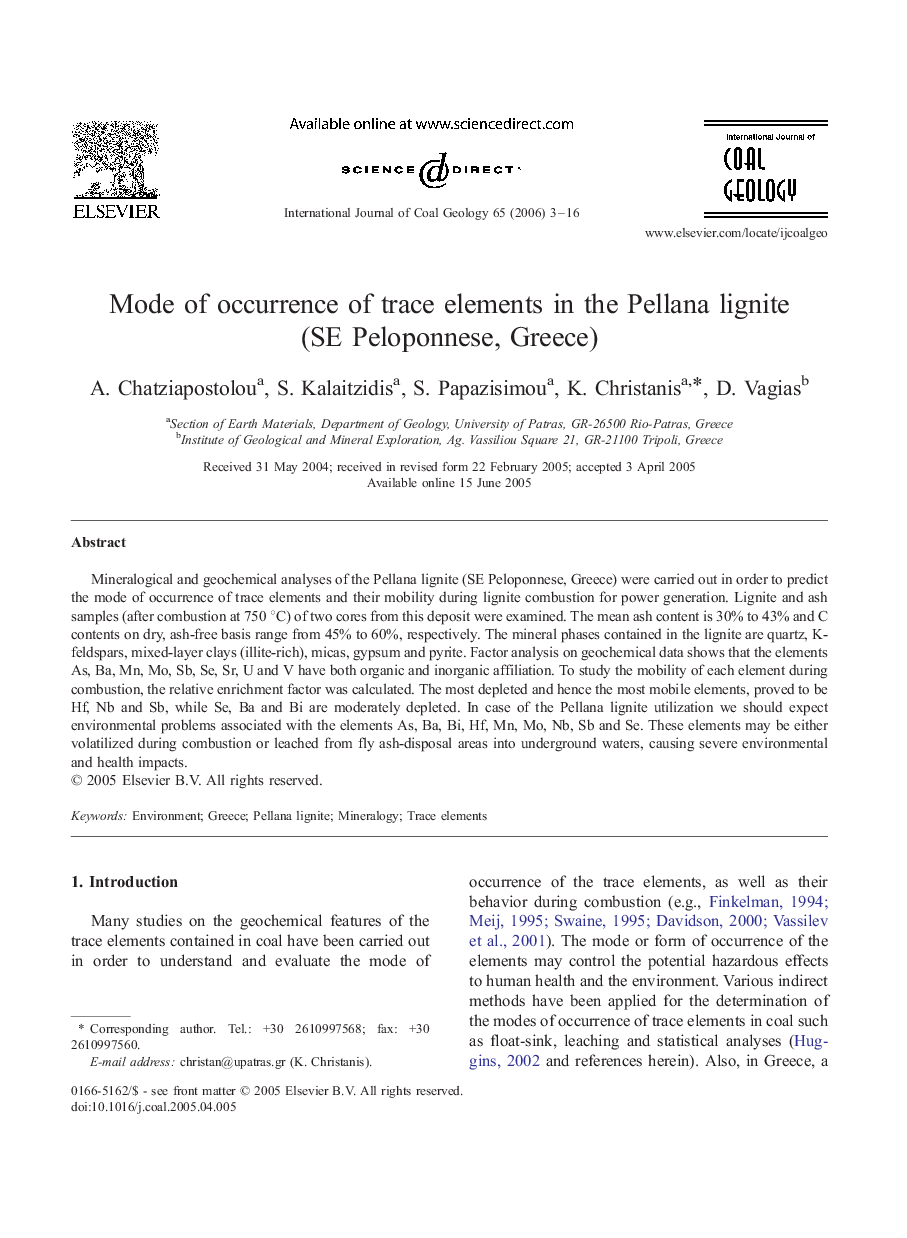| Article ID | Journal | Published Year | Pages | File Type |
|---|---|---|---|---|
| 1754345 | International Journal of Coal Geology | 2006 | 14 Pages |
Mineralogical and geochemical analyses of the Pellana lignite (SE Peloponnese, Greece) were carried out in order to predict the mode of occurrence of trace elements and their mobility during lignite combustion for power generation. Lignite and ash samples (after combustion at 750 °C) of two cores from this deposit were examined. The mean ash content is 30% to 43% and C contents on dry, ash-free basis range from 45% to 60%, respectively. The mineral phases contained in the lignite are quartz, K-feldspars, mixed-layer clays (illite-rich), micas, gypsum and pyrite. Factor analysis on geochemical data shows that the elements As, Ba, Mn, Mo, Sb, Se, Sr, U and V have both organic and inorganic affiliation. To study the mobility of each element during combustion, the relative enrichment factor was calculated. The most depleted and hence the most mobile elements, proved to be Hf, Nb and Sb, while Se, Ba and Bi are moderately depleted. In case of the Pellana lignite utilization we should expect environmental problems associated with the elements As, Ba, Bi, Hf, Mn, Mo, Nb, Sb and Se. These elements may be either volatilized during combustion or leached from fly ash-disposal areas into underground waters, causing severe environmental and health impacts.
